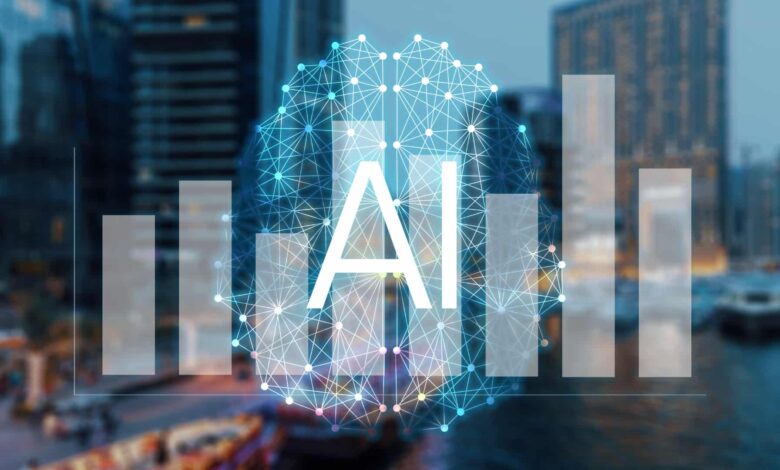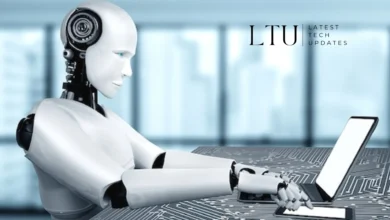An Overview of AI Technology and Its Evolution

Artificial Intelligence (AI) is one of the most transformative technologies of our time. AI broadly refers to the ability of machines to perform human-like cognitive functions such as learning, reasoning, problem-solving, perception, prediction, and more. The goals and applications of AI have evolved tremendously over the decades. In this article, we will provide an overview of AI technology, its current state, and future directions.
What is AI?
AI is intelligence demonstrated by machines to simulate human cognition. AI systems are trained using large datasets and algorithms to acquire capabilities such as:
- Learning – Obtaining data inputs and using them improves performance over time.
- Reasoning – Using rules and logic to reach conclusions or take action.
- Self-correction – Identifying errors and learning from them to enhance output accuracy.
- Perception – Receiving, processing, and analyzing sensory inputs such as visual data.
- Prediction – Forecasting outcomes and behaviours based on data patterns and insights.
- Planning – Defining action sequences and outcomes to achieve a goal-driven objective.
- Creativity – Generating novel and innovative ideas, strategies, and content.
- Social Intelligence – Interacting naturally through emotional intelligence and interpersonal awareness.
A Brief History of AI Technology
The quest to develop intelligent machines has progressed through many waves over the past 70+ years:
- 1940s-50s – Early pioneers proposed foundational concepts of AI which were mostly theoretical at the time.
- 1950s-70s – Researchers focused on human intelligence simulation using simple rules-based programs with limited real-world applicability.
- 1980s – Expert systems and knowledge bases emerged with domain-specific reasoning capabilities.
- 1990s – Machine learning advanced through neural networks and statistical techniques like Bayesian networks.
- 2000s – AI entered the mainstream business through predictive analytics, recommendation systems, and automated speech recognition.
- 2010s – AI explodes into the public consciousness as deep learning fuels tremendous leap forward in computer vision, natural language, robotics, and more.
- Today – AI is powering a wide range of intelligent applications and autonomous systems using cloud computing and big data.

Current State of AI Technology
Modern AI has evolved into a generalized tool capable of tackling complex problems across industries. Key developments driving current AI capabilities include:
- Advanced Neural Networks – Multilayer neural nets enable deep learning for sophisticated pattern recognition and prediction.
- Increased Computing Power – GPUs and silicon chips provide the processing required for intensive AI calculations.
- Big Data – Enormous datasets feed AI algorithms the information needed for insights and supervised learning.
- Cloud Computing – On-demand cloud infrastructure allows access to vast distributed computing resources.
- Open Source Frameworks – Software kits like TensorFlow and PyTorch accelerate AI development.
- Edge Computing – Running AI where data is generated, like on IoT devices, reduces latency.
- Advances in Academia – Thousands of researchers worldwide are expanding and improving AI techniques.
- Market Investment – Billions in private and public sector funding drive rapid innovation.
Key AI Technology Applications
AI is being applied across industries and use cases, including:
- Computer Vision – Image recognition, object detection, face verification. Apps like autonomous vehicles, and surveillance.
- Natural Language Processing – Machine translation, text analytics, speech synthesis and recognition. Virtual assistants like Alexa and Siri.
- Robotics – Navigation, motion control, and situational awareness for factory automation and drones.
- Healthcare – Drug discovery, medical diagnosis, and personalized treatment recommendations.
- Cybersecurity – Malware and intrusion detection, network analytics, authentication systems.
- Financial Services – Algorithmic trading, fraud prevention, credit risk modelling, robo-advisors.
- Business Intelligence – Predictive analytics, sales forecasting, market mix modeling, dynamic pricing.
- Recommender Systems – Product suggestions, content recommendations, and targeted advertising in services like Netflix and Amazon.
- Logistics – Supply chain optimization, inventory management, route planning, delivery automation.
The Future of AI
Experts predict dramatic growth in the capabilities and adoption of AI technology in the coming decades. Key trends fueling AI’s future include:
- Expansion into more industries and use cases – Healthcare, education, agriculture, government policymaking, and more will leverage AI.
- Consumer adoption of AI services – Digital assistants, autonomous vehicles, and intelligent IoT ecosystems will become mainstream.
- Advances in cognitive capabilities – AI will gain enhanced social and emotional intelligence.
- On-device embedded AI – Edge computing will allow AI to run locally on devices for efficiency.
- Improved human-AI interaction – AI assistants will communicate in natural language with contextual understanding and personalized insights.
- Growth in AI talent – Demand for AI researchers, practitioners, ethicists, and technical talent will rise globally.
- Emergence of artificial general intelligence – Long-term efforts to develop adaptable multifunction AI systems.
- Societal adoption of human-AI collaboration – Coexisting with capable AI systems will enable human empowerment.
Key Challenges Facing AI
For all its promise, AI still faces crucial challenges around:
- Explainability – Understanding how AI models reach decisions and predictions. Critical for safety and ethics in high-risk applications.
- Potential job displacement – AI automation may significantly alter employment across sectors.
- Privacy and security vulnerabilities – Personal data collection required for AI can enable surveillance, hacking, fraud, or manipulation if not properly protected.
- Inherent biases – Models can perpetuate and amplify issues of unfair bias if not developed thoughtfully.
- Lack of AI expertise – Demand for AI researchers and practitioners significantly exceeds supply. Educational pipelines need growth.
AI Regulation and Ethics
As AI becomes more advanced and its impacts broaden, governments, corporations and advocates are developing frameworks to ensure AI is developed ethically and deployed responsibly, through initiatives like:
- International coordination on AI standards and regulations.
- Corporate accountability for mitigating algorithmic harms.
- Unbiased and representative AI training data collection practices.
- Independent auditing of AI systems to identify potential risks.
- Developing tools and best practices that ensure AI transparency.
- Educating users on appropriate and inappropriate uses of AI technology.
By bringing together stakeholders from technology, business, government, and society we can maximize AI’s benefits while proactively managing its risks.
The growth of artificial intelligence is a story of human ingenuity. While there are challenges ahead, with collaborative leadership we can steer AI’s evolution toward the collective uplifting of humanity.
Frequently Asked Questions
Q: How is machine learning different from AI?
A: Machine learning is a subset of AI focused on algorithms that enable predictive capabilities by learning patterns from data without explicit programming. Deep learning uses advanced neural nets for sophisticated machine learning.
Q: What industries stand to benefit most from AI in the near term?
A: Industries likely to see major near-term disruption from AI include finance, healthcare, retail, cybersecurity, manufacturing, and transportation. In the long term, AI may significantly impact education, media, governance, and more.
Q: What are the risks associated with artificial general intelligence (AGI)?
A: AGI, or AI capable of general cognitive functions at human levels, does not currently exist. However, there are risks around loss of control and humanity’s position should super-intelligent AGI emerge. Ongoing ethics research aims to mitigate AGI risks.
Q: Is AI going to replace human jobs and minds?
A: In many contexts, AI will likely augment rather than replace humans, working collaboratively to enhance capabilities beyond what either can do alone. But AI will require adjustments by displacing select jobs as automation grows.
Q: How can I start learning about AI technology?
A: Some ways to get introduced to AI are online course platforms like Coursera and Udacity, introductory AI textbooks, utilization of open-source machine learning libraries, joining local AI meetup groups, and seeking mentorship from those in the field.





